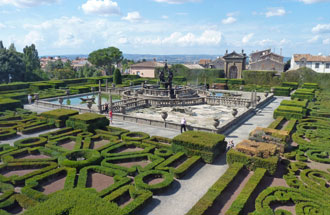 |
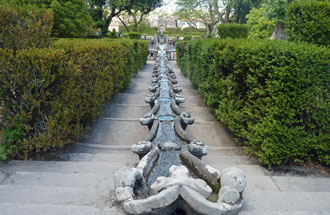 |
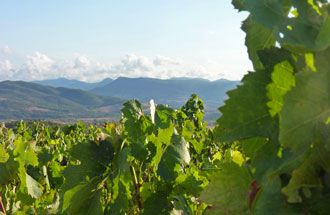 |
||
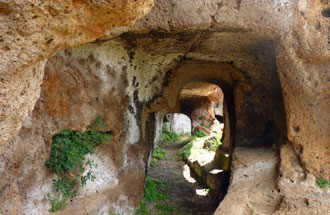 |
 |
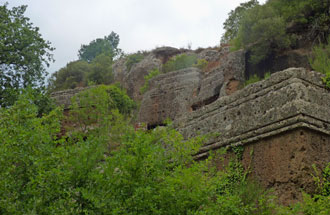 |
||
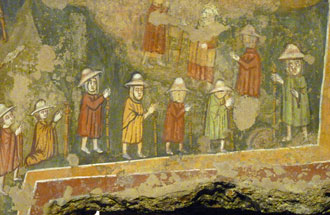 |
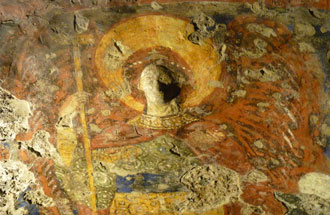 |
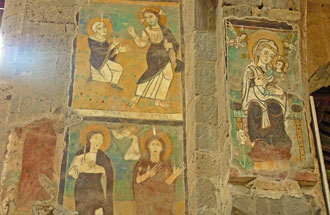 |
||
CdP
31 August 2016
I generally cite the energy company Enel as a shining beacon of counter-intuitive Italian efficiency.
They were heroic in the great snow of 2012. And the tale of the keen, jolly bloke who turned up ten minutes after we called one Easter Sunday (“it was a toss-up between working or having lunch with my mother-in-law. No competition really.”) remains a family classic.
This time, however, they’ve let me down badly, leaving me in the dark from 10.30pm yesterday until 6pm this evening. I sat awake until oblivion overtook me waiting for them to appear as promised last night. Thank goodness for my trusty old-fashioned no-electricity phone with which I kept pestering them today.
The creeper that had reached the top of a pole in the impenetrable jungle of abandoned terraces to the south of us has been hacked down. The plant had been ripped from its perch in last night’s storm, causing a short circuit. Now that I’m illuminated once more, I’m rather shocked that I spent much of the day throwing things (credit card statements from the ‘80s, insurance slips for cars we sold decades ago) out: did feeling detached from the world shake me out of my hoarding ways?
Now I can post what I was writing yesterday when the lights went off.
30 August 2016
The peaches have crept up on me this year. They were so small and so hard that I had hardly given them a second thought. They’re still smallish, and they’re pretty firm too, but they’ve turned a splendid rich colour. What colour? Peach, I guess, but an intense, exotic version of peach.
They’re now some fine place between crunchy and pleasantly chewy: yes, I know, not how you think of the perfect peach but their essence-of-peach flavour seems to suit the consistency, and juice does squeeze between your teeth as you bite into them. If I leave them until they’re squishy enough to run juice freely, I lose most of them to the birds – either that or they fall and are pulverised under passing car wheels.
There aren’t nearly so many as last year’s ludicrously over-the-top haul but they’re still bending the big branches of the old trees. Were it not so black and stormy I might be out there harvesting them for jam right now rather than in here tapping away. Until about two hours ago, we were in serious drought. In the past four weeks we’ve had just 1.5mm of rain, and my sandy-coloured lawn is fast crumbling to dust. Now I’ve unplugged my computer as lights flicker, and the sky is black black black, rent by sheet lightning and set to near-continual rumbling. It’s all rather apocalyptic.
I hope it’s not (though I fear it is) falling on those poor people shaken out of their homes by last week’s earthquake on the Lazio/Marche border. As if they didn’t have enough to cope with. We slept right through the shaking which many people here told me they felt clearly. And I thought I was a sensitive sleeper.
I spent much of the following day in the car, listening to non-stop coverage on the radio, as the death toll mounted and remarkably non-shouty experts and hacks painted an incredibly moving picture of an emergency mobilisation which shows Italians in all their generous, caring glory – the good side of Italy (as opposed to the reprehensible side of Italy which is emerging as we learn of the criminals, sharks and incompetents who misused funds previously earmarked for anti-seismic work in the area that has collapsed).
Of all the army of well trained volunteers that springs into action when disaster strikes under the incredibly coordinated Protezione Civile umbrella, my favourite that day had to be the Nucleo Enduristi di Cerveteri: trailbike nutters who bounce their wheels over mountain peaks and down cliffs just for fun, but who are also summoned to transport medical staff and essential supplies and radio equipment and what have you to far-flung communities when roads are out and bridges are down. I’d be prepared to bet that the endurista I heard interviewed was a lawyer in his day job, or perhaps a banker. The selflessness is quite astounding.
Earthquakes come with their own lore of course. Long ago in Rome, we had a friend called Angelo who insisted that a halo around the moon meant tempo di terremoto – earthquake weather. He would intone this with great frequency, each time he looked up and saw the threatening glimmer… a very common occurrence which I’d say owed more to air pollution than seismic activity. But he would never budge from his scaremongering.
One of our neighbours here found a viper by his pool the day after last week’s quake and was reliably informed by the man who was round cleaning the pool that vipers were appearing everywhere, shaken out of their hidey holes by the quivering earth.
Now, I don’t claim by any means to be an expert in snake behaviour but it strikes me that the one thing we all know (and fear) about vipers is that they are completely immune to vibrations of any kind. I once passed quite low over one by mistake with the strimmer and it didn’t budge an inch, continuing to lie there, the nasty little creature, waiting for me to step on it and suffer the consequences. (I didn’t.)
Given that we were in desperate drought at that point, and that presumably even utterly insensitive vipers suffer from thirst, I would have put my money on the snake’s having been attracted by a large body of water, rather than all shook up by the earthquake. Maybe I’m wrong.
But I’ve searched and searched for anything to back up the viper/quake claim and the closest thing I’ve found is a weird little tale from Villa San Giovanni on the Straits of Messina.
Every now and then there are reports that a pesce vipera – the immensely ugly and exclusively tropical deep-water sea viper or Chauliodus sloani – has washed up on a beach there. This very un-Med fish, locals say, is a messenger sent by Poseidon to warn of impending catastrophe. One “appeared” before each of the catastrophic earthquakes that razed parts of Sicily in 1703 and 1908, suspicious locals will tell you. Certainly more dramatic than a snake by a pool…
We did a short jaunt into Tuscia last week, staying near Vetralla with our exuberant friend Olivia and bumbling about that strange area north of Rome in her bright orange open-top Beetle.
I say strange because ‘Tuscia’ is a bit of a nebulous concept, despite valiant attempts by the Viterbo province tourist board to give it form and substance. The name comes from ‘Etruscan’ and the area was definitely home to that intriguing pre-Roman people, though their writ ran far wider than what we refer to now as Tuscia.
But it’s strange too because it sits in the wide caldera of the vulcano di Vico, an area of ancient (extinct?) volcanic activity centred on the oh-so-deep Lake Vico and the neighbouring Cimini mountains.
Is it just because I know this that I find the whole area – despite an incredible raw beauty and some truly spectacular highlights – slightly ennervating and a little distressing? Houses here are built of the local tufo stone, the product of volcanic explosions, oozing radioactive radon (Health Ministry literature tells me that this could be responsible for up to 20% of Italy’s lung cancers) and leaching high levels of arsenic into water tables.
Before I move on to the wonderful things of Tuscia – and there are wonderful things, lots of them – my final reservation about the area is an air of oppression, by the Church first and the Christian Democrats after, that (for me) clings on here. Tufo can look lovely in the sun but is the colour of abject misery on a damp grey day. In the wrong conditions (and we were definitely there in the right ones) the souls of centuries of downtrodden simple folk subjugated by bigots howl in the wind. Is my imagination running away with me?
Having shared my prejudices, I shall move on to what we actually experienced.
Many of those Tuscia villages into which I read a history of penury and suffering have in fact become rather chic and delightful: simple boltholes, even within commuting distance of Rome. Sutri is a case in point, with clear signs of an influx of wealth. There have been well directed injections of cash into restoration of its amazing amphitheatre and ancient remains too.
Sear uplands sliced through by plunging wooded ravines hide Roman bridges and ruins such as Norchia, a tufo-hewn Etruscan tomb site engulfed in unchecked vegetation calling Inca cities to mind. We felt we were the first people to visit for centuries. In Tuscania, two spectacular Romanesque churches hide strange sallies into very un-Christian imagery.
And then there are the gardens, superb 16th-century Mannerist creations which I’m afraid to say I hadn’t seen for many years – perhaps not even since the birth of C which means that we’re talking, shamefully, almost three decades. Villa Lante in Bagnaia has the most arresting parterre laid out in front of its twin casini, and a stunning rill of intersecting basins bringing water slapping down towards a great fountain bowl. Villa Farnese at Caprarola we had ridiculously little time in, so much so that I hardly began on the garden, the villa itself being so fascinating. I promised myself a swift return but I’m bad at that.
At both, the sheer wondrousness won out (almost entirely) over my natural tendency to moan about upkeep done (where done) by people who are of dubious talent as gardeners. What is this about Italy? Why is gardener seen as a job akin to cleaner, rather than as something requiring skill? Then there’s the problem of funding… More worrying, though, is the box (Buxus sempervirens). What will become of the Italian garden when invading insects (Cydalima perspectalis) and blight (Cylindrocladium buxicola) have done their miserable work?
In a garden (not a great Renaissance garden…) where I’m working not far from La Spezia there’s a hedge – a remarkable thing which must be about 75m long and considerably higher than I am tall – which was so well concealed behind blowsy, out-of-control trees and bushes that I hadn’t given it much thought. Closer inspection revealed a web-filled filigree, the remains of what must have been quite an extraordinary box hedge. The gardener told me that he had sprayed and sprayed and would spray some more but I suggested, slightly guiltily, perhaps just giving up the uneven struggle and replanting it with something less troublesome and, ultimately, less polluting if keeping that monumental disease-magnet alive required such massive quantities of chemical.
My early-August renovation jubilation in town has given way to creeping despair.
Builders decided (quite rightly, some small niggling reasonable voice deep inside me whispers) that August was holiday time, and so disappeared for a week.
Then Stefano decided to dig one of his holes. Hacking away to move the cellar steps had loosened up the subterranean wall (basically, packed earth with a few stones in it) between my house and my neighbour to the west, he reckoned. So he dug it all out, to rebuild it properly.
When I turned up to find a gaping chasm propped up on some old beams I was horrified – partly because I immediately pictured an earthquake shaking the whole street down because of me, and partly because I immediately started totting up what this bit of excavation might cost me, and felt faint. I pointed out (quite forcefully) that had he built up as he dug out, then the wall in question wouldn’t have shifted.
Now he’s busy back-filling his grotto, and it’s not looking much like progress.